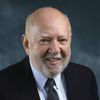Many seniors in retirement are concerned that they may outlive their financial assets. If they have equity in their homes, however, they can reduce or eliminate this worry. They can use the HECM reverse mortgage program to generate an income stream that becomes larger the longer they live. It is urgent to act now, however, because the window for doing these deals will begin to close when interest rates begin their inevitable rise.
This use of the HECM reverse mortgage program as a type of insurance policy employs the credit line feature of the program. The senior uses her borrowing power to draw the largest line available, and lets the line sit unused until she needs it. The longer the senior lives, the longer the credit line sits unused, and the larger it becomes. While her financial assets are gradually being depleted, her credit line is getting larger. She draws on the line if she needs the money, otherwise the equity in her house will pass to her estate.
Why the urgency? The size of the initial HECM credit lines that can be drawn are inversely related to interest rates, while the growth rate of existing unused lines is directly related to rates. Hence, a senior with a specified amount of equity gets the maximum insurance coverage by taking out the HECM while interest rates are still low, and letting it sit unused as rates rise in the future.
Interest rates have a much larger impact on the initial credit line a senior can command than his age. A senior of 62 with $200,000 of equity in his home can command an initial credit line of $97,800 at the current rate of 5%. If he waits for interest rates to begin their inevitable rise, the credit line will drop precipitously. At 10%, the initial line available to the same borrower would be $19,000, or 80% less. A borrower of 92 at 10% cannot command as large a line as a borrower of 62 at 5%. (Note: a full table of credit lines is available on my web site.)
Keep in mind that mortgage rates were 10% or higher during most of the period 1979-1990.
An unused credit line grows from month to month at a rate equal to the then-current rate on the HECM plus the mortgage insurance premium. The higher future rates are, therefore the more rapidly the unused line grows. The unused line of the senior referred to earlier, assuming she moved fast enough to get an initial line of $97,800 based on the 5% rate, would have a line of about $600,000 after 30 years if the rate stayed at 5%. But if the rate was 7%, her line would exceed a million, and if the rate was 10%, the line would exceed two million.
HECM borrowers who act while interest rates are still low get the benefit of high initial credit lines, and once they have the HECM they benefit from rising rates in the future because their unused lines will grow at the current rate. This unusual opportunity has never existed before, and may not ever exist again.
You can use the professor's reverse mortgage calculator to get more information on your specific financial situation.
